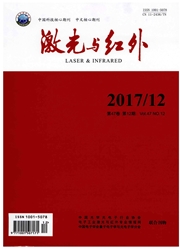

 中文摘要:
中文摘要:
同一种蕈菌子实体,由于外观形貌相似,凭传统外观形貌特征难以鉴别产地来源。用傅里叶变换红外光谱技术结合系统聚类分析了5个不同产地的63个野生小美牛肝菌子实体样本。结果表明,原始红外光谱在4000-400 cm^-1总体特征相似,主要是由蛋白质、多糖等吸收谱峰组成,在1800-1000 cm^-1范围不同产地样本的原始光谱存在微小的差异。对光谱进行一阶导数和二阶导数处理,用导数光谱进行系统聚类分析(HCA),结果显示,一阶导数光谱在1800-1000 cm^-1范围按不同产地样本聚类效果较好,63个样本按5个不同产地很好地聚类,分类正确率达到了90.5%。结果提示傅里叶变换红外光谱结合系统聚类分析可以快速、方便地对不同产地野生蕈菌进行鉴别分类。
 英文摘要:
英文摘要:
It is hard to differentiate the same species of wild growing mushrooms from different areas by macromorphological features. In this paper, Fourier transform infrared spectroscopy(FTIR) combined with hierarchical cluster analysis was used to identify 63 samples of Boletus speciosus from five different areas. The original characteristic infrared spectras of the mushrooms are very similar, with small differences in the range of 1800 - 1000 cm^-1. Hierarchical cluster analysis was performed using the first derivative and second derivative spectral range 1800 - 1000 cm^-1. The first derivative spectra give satisfactory results. All Boletus speciosus samples were divided into 5 classes with a classi- fication accuracy of 90.5%. It is proved that KTIR spectroscopy combined with hierarchical cluster analysis could be used to discriminate wild growing mushrooms at species level.
 同期刊论文项目
同期刊论文项目
 同项目期刊论文
同项目期刊论文
 Calculated of Vibrational Spectral Properties of Four Protonation Forms of Histidine Using Density F
Calculated of Vibrational Spectral Properties of Four Protonation Forms of Histidine Using Density F 期刊信息
期刊信息
